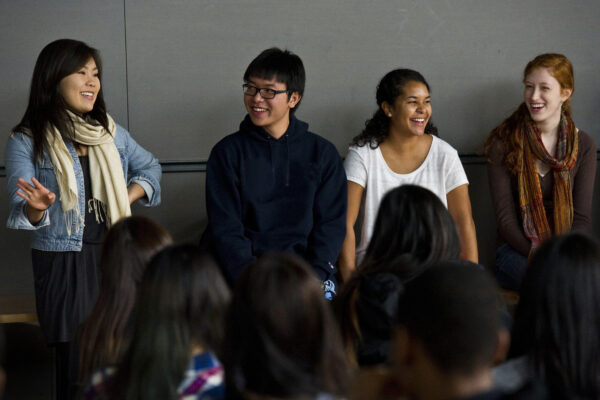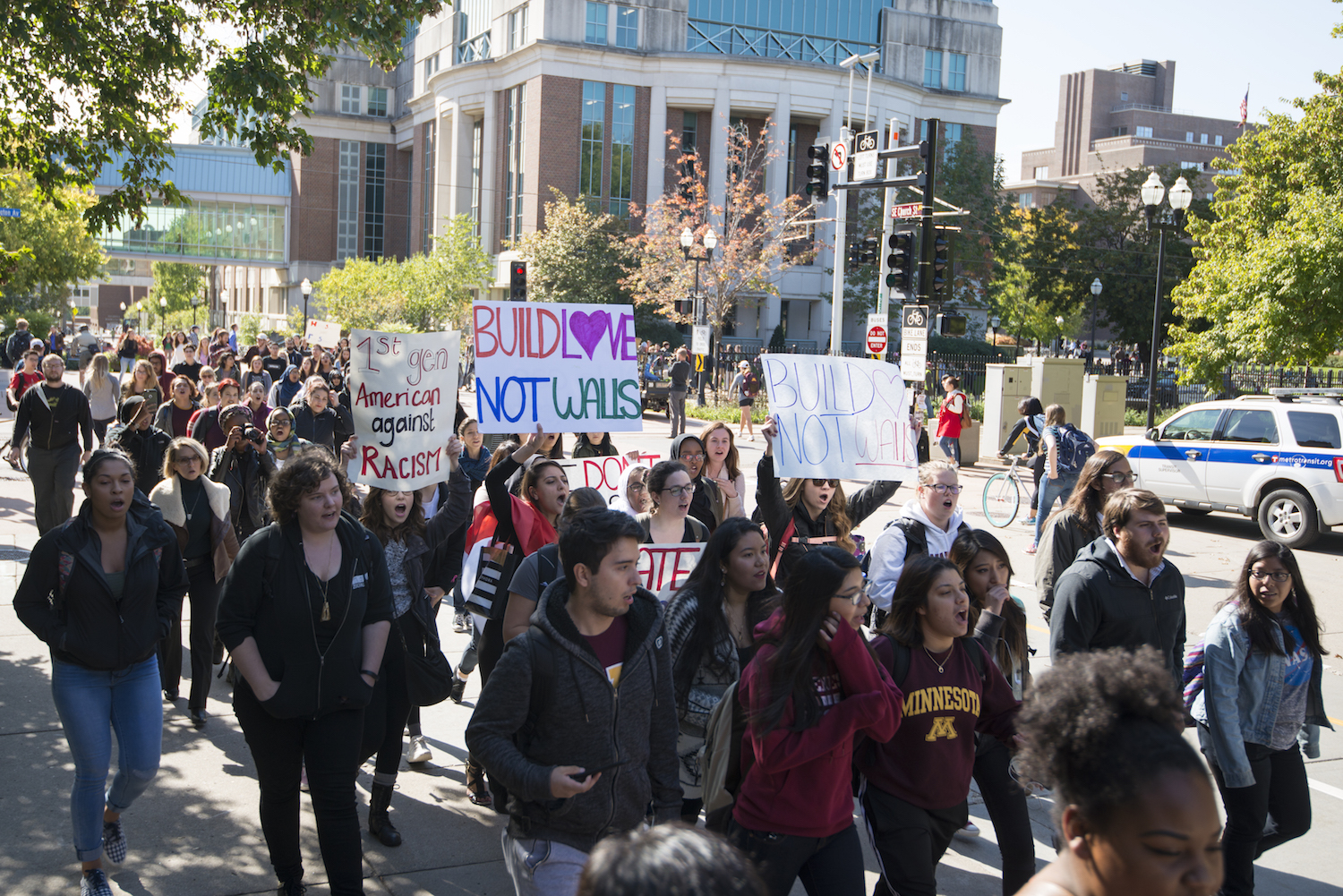In the upcoming edition of The Presidency, William E. Kirwan, chancellor emeritus of the University System of Maryland, asks if higher education is prepared to lead on the issues of inclusion facing institutions today. His article is posted in its entirety below.
Most higher education leaders would agree that our nation’s colleges and universities have a responsibility to promote diversity and inclusion. First, there is the obvious educational benefit. A diverse campus community enriches the learning experience for all students in ways that a more restricted culture simply can’t. Second, there is the purely practical matter of enlightened self-interest. Our nation is becoming more racially and ethnically diverse and we must educate a larger number of low-income and minority students to lead in the global economy. Finally and perhaps most importantly, there is the moral imperative. Higher education has become the most reliable upwardly mobile pathway to a rewarding career and a high quality of life. For all these reasons, reaching more low‐income, underrepresented-minority, and first-generation student populations must hold a prominent place not just in our institutions’ but in our nation’s priorities as well.
When I think back to the ‘60s, ‘70s, and even the ‘80s, I recall a time when there was real passion and energy surrounding the efforts to create greater inclusion and diversity among the student body, faculty, and administrative staff on our campuses. Though progress was uneven, this broad‐based, intense commitment to diversity produced substantial results. Back then, there was no question that higher education was at the cutting edge on diversity issues. We were the entity in society that was “pushing the envelope.” Not so today. Many in the private sector and the U.S. military are outperforming us on the issues of inclusion.
From my perspective, a troubling and rising level of institutional complacency surrounding diversity issues at many institutions has given rise to the unrest and protests we are seeing on college campuses right now—large and small, public and private, highly selective and open access. Obviously, I cannot speak for any of these students, nor do I agree with all of their demands, but I am moved by the sense that many do not feel welcome on their campuses. They were admitted—they were INVITED—to the institution, but they do not feel accepted at the institution.
A few years ago, Arthur Levine, president of the Woodrow Wilson Foundation, co‐authored Generation on a Tightrope: A Portrait of Today’s College Student, which profiled college students based on research of 5,000 students at 270 colleges between 2006 and 2011. Commenting recently in Inside Higher Ed on the uprisings at the University of Missouri, Yale University (CT), and elsewhere, Levine makes the case—supported by his research—that race relations had been improving on campuses: more students had friendships with students of other races; more students supported interracial dating; more students agreed that diversity and inclusion were important qualities for colleges and universities.
However, in that same article, he worries that those positive trends are now reversing. If that is the case, then America’s colleges and universities missed a golden opportunity to advance the cause of constructive racial relations on campuses and, by extension, in the nation. The momentum that had been building leading up to the beginning of the current decade could have been—SHOULD have been—taken full advantage of by making inclusiveness a top priority; but as Levine laments, that simply didn’t happen. And that may explain some of the tensions becoming ever more evident.
When I consider the current unrest surrounding the issues of diversity and inclusion, I see three distinct “needs.”
First, efforts to address the underlying causes of the protests cry out for presidential leadership, leadership that permeates the entire campus community so that diversity and inclusion goals are shared with all and progress toward them becomes a prominent measure of the university’s success. Arthur Levine makes that point as well, going so far as to warn presidents that they put themselves at risk if they delegate diversity issues and don’t stay personally, directly involved.
Second, presidential visibility on issues of inclusion, while clearly necessary, is not sufficient in and of itself. The essential rhetoric must be coupled with resources and infrastructure to buttress a president’s commitment so that there is persistent and consistent attention paid to nurturing an inclusive culture throughout the institution.
Finally, when contentious issues arise, actions and decisions should not take place in a rush or in immediate response to a protest or sit‐in. Almost without exception, they should be made after a period of deliberation and constructive dialogue, involving—whenever possible—established processes and shared governance bodies. In addition, institutions must resolutely maintain allegiance to core academic values of freedom of thought and freedom of expression.
The need for this comprehensive approach can be seen in an especially vexing problem presidents and institutions face today: the removal of names from buildings and programs honoring leaders of a different era, who in today’s context have significant flaws in their careers. Two recent newspaper op‐eds captured well for me the extraordinary complexity of this issue.
In the first, columnist Richard Cohen of The Washington Post was commenting on the Woodrow Wilson issue at Princeton University (NJ) and wrote, “When I look at Wilson’s portrait, I might think first of the League of Nations and second how when he grew ill his wife secretly governed in his stead—and not give primacy to his racism. But I am white, so Wilson’s support of Jim Crow laws and his determination to implement them in the civil service may not give me the same emotional jolt that they do a black person.”
In the second op‐ed, a powerful piece in The New York Times titled “What Woodrow Wilson Cost My Grandfather,” Gordon J. Davis describes how Woodrow Wilson’s segregationist—racist, really—policies stripped his grandfather of his dignity and a managerial position in the federal government. The grandfather died a broken man. It is a heart‐wrenching story. Imagine, if you can, how one of Gordon Davis’ sons or daughters—or any student for that matter informed about this aspect of Wilson’s legacy—might feel if they attended Princeton and saw the Wilson name glorified across the institution.
I can hardly imagine a more challenging issue for presidents; they are truly caught between a rock and a hard place. Passions usually run high on both sides of the issue. Unless the name change occurs, one side asserts that presidents and institutions are hypocritical in their claim of fostering diversity and a nurturing environment. On the other hand, opponents claim that a change ignores historical context and the positive accomplishments of the honoree. Finding satisfactory resolutions is a challenge, and only through a thoughtful and constructive approach—punctuated by presidential leadership—can they be found.
When I reflect back on the campus-based protest movements I have witnessed during my more than 50 years in higher education, I am struck by how, for the most part, they have been positive, uplifting, and—ultimately—on the “right side of history.” Campus activism in support of the civil rights movement, women’s rights, LGBT rights, and environmental sustainability helped advance these causes. Can higher education provide the same kind of leadership on the pressing issues of inclusion our institutions and nation face today? Yes, but only if these issues receive the focused attention they deserve by college and university leaders.
If you have any questions or comments about this blog post, please contact us.


